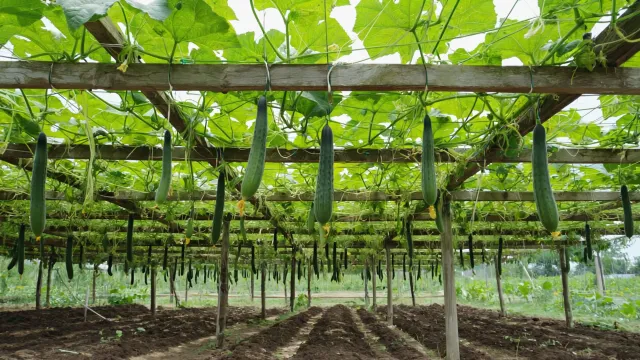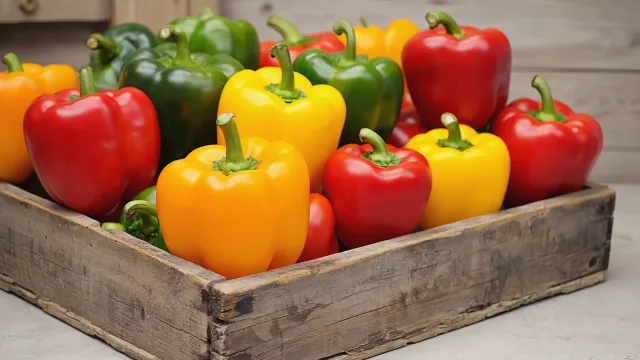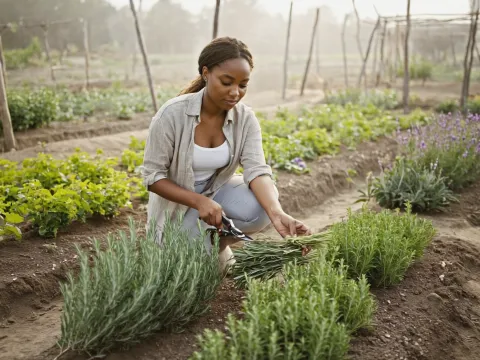Published on May 26, 2025
Last updated: May 26, 2025 · ⏱ 4 min read
Grow Sweet Strawberries in Pots — No Backyard Needed

Introduction to Growing Strawberries in Containers
Growing strawberries in containers can transform your outdoor space into a vibrant oasis of flavor and color. Whether you have a spacious garden or a petite balcony, cultivating strawberries in pots offers a practical solution for enjoying fresh, succulent fruit right at home. This guide will walk you through the essential steps and best practices for successfully growing strawberries in containers, ensuring that you can savor the sweetness of homegrown strawberries.
Choosing the Right Containers
The first step in growing strawberries in containers is selecting the appropriate pots. Strawberries thrive in containers that provide adequate drainage and enough room for their roots to expand. Opt for pots that are at least 12 inches deep, allowing the roots to develop without restriction. Additionally, ensure that the containers have drainage holes at the bottom to prevent waterlogging, which can lead to root rot.
Material also plays a significant role in container selection. Terra cotta, plastic, and ceramic containers are all viable options. Terra cotta pots are porous and allow for airflow; however, they tend to dry out quickly, requiring more frequent watering. Plastic pots retain moisture longer, making them suitable for those who may forget to water regularly. Choose a material that aligns with your gardening habits and local climate conditions.
Selecting the Right Strawberry Varieties
Not all strawberries are created equal, and selecting the right variety for your climate and growing conditions is crucial. There are three main types of strawberries: June-bearing, everbearing, and day-neutral. June-bearing strawberries produce a large harvest during a specific period in early summer, making them a great choice if you prefer a bountiful crop at once. Everbearing varieties yield fruit throughout the growing season, providing a steady supply from late spring to early fall. Day-neutral strawberries are similar to everbearing, but they can produce fruit even in cooler temperatures, extending your harvest window.
When choosing varieties, consider your local climate. Some strawberries thrive in cooler regions, while others are better suited for warmer climates. Additionally, seek out disease-resistant varieties to ensure a healthy harvest. Popular options include 'Albion,' 'Seascape,' and 'Honeoye,' each offering unique flavors and growing characteristics.
Preparing the Soil for Strawberries
Soil quality is pivotal for successful strawberry cultivation. Use a high-quality potting mix that is well-draining and rich in organic matter. You can create your own mix by combining equal parts of peat moss, compost, and perlite or vermiculite. This combination ensures the soil retains moisture while allowing excess water to escape.
Additionally, consider adding a slow-release fertilizer to the soil before planting. This will provide your strawberries with the necessary nutrients to thrive, particularly during the early stages of growth. Follow the product instructions regarding the amount to use, and avoid over-fertilizing, as this can lead to excessive leaf growth at the expense of fruit production.
Planting Your Strawberries
Once your containers are prepared and your soil is ready, it's time to plant your strawberries. Begin by ensuring that your strawberry plants have healthy roots and are free from any signs of disease. If you're starting from bare root plants, soak them in water for a few hours before planting to help them establish more quickly.
Fill your container with the prepared soil mix, leaving about an inch of space at the top. Plant your strawberries, ensuring that the crown—the point where the roots meet the stems—is level with the soil surface. This positioning is essential; if buried too deep, the plants may rot, and if too shallow, they may dry out. Space your plants approximately 12 inches apart to allow for proper air circulation and growth.
Caring for Your Container Strawberries
Proper care is vital to ensure a healthy and productive strawberry container garden. Watering is one of the most critical aspects. Strawberries require consistent moisture, especially during their fruiting stage. Check the soil regularly, and water when the top inch feels dry. Be careful not to overwater, as this can lead to root diseases.
Sunlight is another essential factor. Strawberries thrive in full sun, so place your containers in a location that receives at least 6 to 8 hours of sunlight each day. If you live in a particularly hot climate, some afternoon shade can help protect the plants from scorching.
Fertilization should continue throughout the growing season. After the initial application, consider feeding your strawberries every four to six weeks with a balanced, water-soluble fertilizer. This will support fruit production and overall plant health.
Managing Pests and Diseases
Despite your best efforts, pests and diseases can still affect your strawberry plants. Common pests include aphids, spider mites, and slugs. Regularly inspect your plants for any signs of infestation. If you notice pests, consider using organic pest control methods, such as insecticidal soap or neem oil, which are less harmful to beneficial insects and the environment.
Diseases, such as powdery mildew and root rot, can also pose a threat. To minimize the risk, ensure proper air circulation by not overcrowding your plants and maintaining a clean growing environment. If you encounter disease, remove affected leaves promptly and consider using fungicides as a preventive measure.
Harvesting Your Strawberries
The moment you’ve been waiting for—harvesting your strawberries! Depending on the variety you chose, your plants will start producing fruit within a few weeks to several months after planting. Harvest strawberries when they are fully red and slightly soft to the touch. Be gentle when picking to avoid damaging the fruit or the plant.

Written by Soufyan from GrowToGrub
Soufyan is a gardening educator and founder of GrowToGrub. Through simple guides, easy recipes, and practical life hacks, he helps everyday growers turn small spaces into sustainable, delicious, and chemical-free living.


